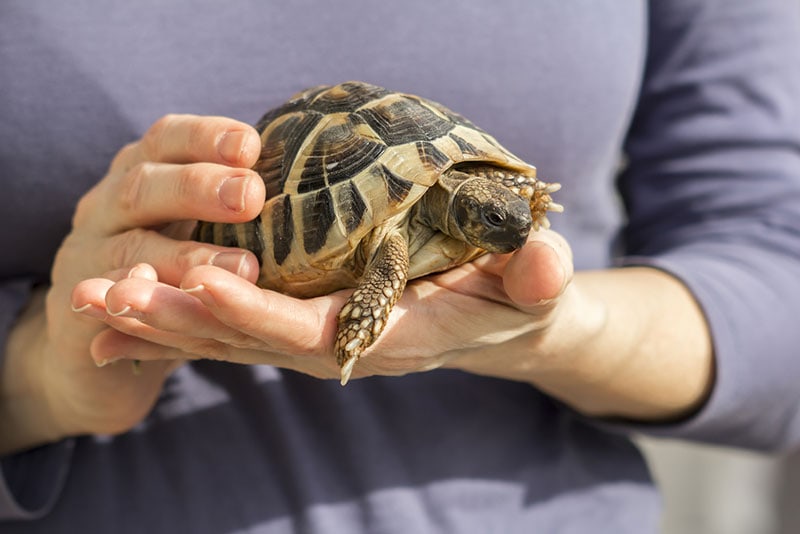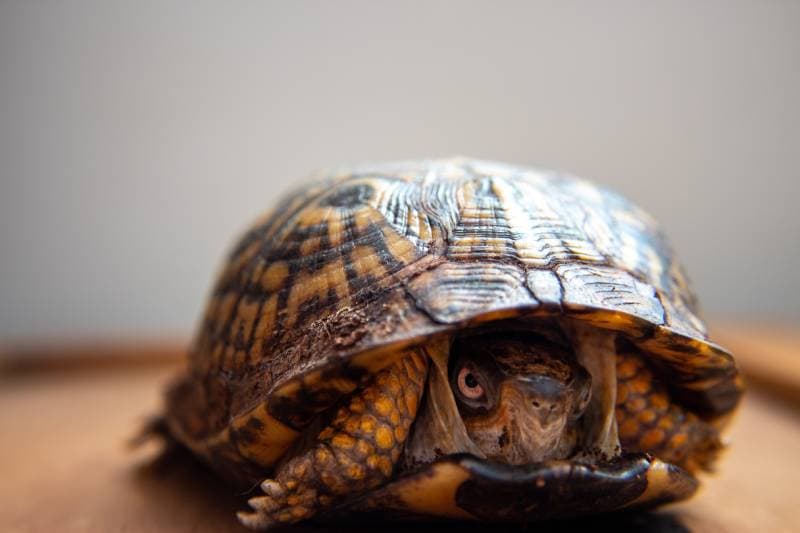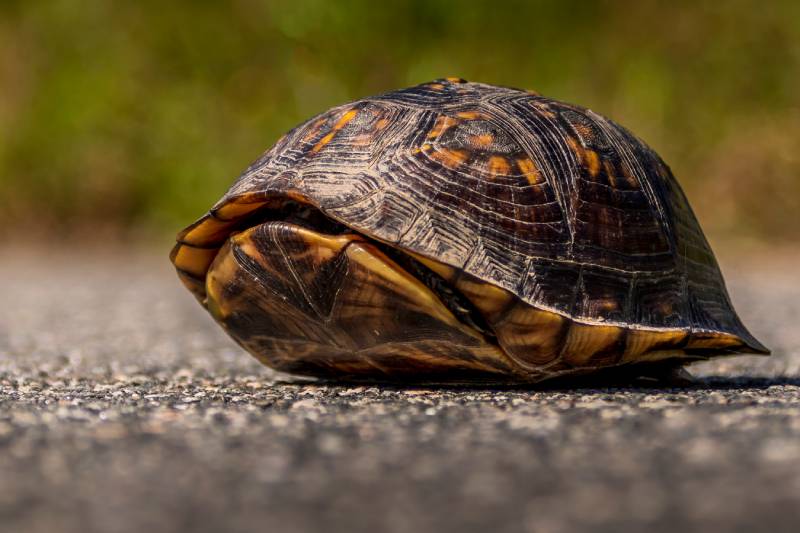VET APPROVED

The information is current and up-to-date in accordance with the latest veterinarian research.
Learn more »Click to Skip Ahead
If you own a turtle, you may have seen them tucking their head, limbs, and tail into their shell. This retreating action may have made you think their shells are only for protection. Yes, that’s partly true, but these little animals didn’t develop their hardy exteriors just for this purpose.
Instead, the shell of this slow-moving reptilian helps them with locomotion, digging, swimming, and navigation. As surprising as it sounds, many studies back up these claims of the uses of a turtle’s shell.1
If you want to learn more about your little pet’s shell, this post discusses everything you should know. So, let’s discover how turtles’ shells evolved and why these animals need them in the first place!

The Evolution of a Turtle’s Shell
The main use case for a turtle’s shell was to help these animals dig instead of serving as their guards. That’s similar to how birds didn’t initially get their feathers for flight, but it eventually became their main use.
Early turtles lived in the harsh South African environment, and their underground digging skills were the only way to escape. But that’s only one aspect of their shell evolution.2
Their shells also evolved to give turtles broader ribs. Broadening of the ribs is a phenomenon that has puzzled scientists for years. While broader ribs may not seem special, they’re significant to a quadrupedal animal like the turtle. This feature helps the turtle with breathing, speed, structural support, and locomotion.

By stiffening the torso, the turtle’s ribs shorten their stride and slow their breathing. That makes us wonder why the ribs didn’t evolve any further. But scientists also cleared up that confusion.
While their broadened ribs make breathing harder, it was a crucial evolution for structural support. So, these shelled geniuses developed muscular slings to ventilate their lungs and breathe better. However, ribs are only one step in creating the modern turtle shell we know today. The turtle’s vertebrae also evolved to support the turtle’s top and bottom shells. Meanwhile, the shoulder blades began to make room for the expanding shell.
Lastly, the breastbone was developed for organ protection, resulting in a variation of the modern turtle shell.

Why Do Turtles Have Shells?
Sure, the turtle shell’s first evolutionary changes were for better locomotion. But why would it eventually develop into a strong armor? The shortest answer is for protection from predators.
The turtle’s shell kept evolving over time. With enough bad experiences with predators and environmental threats, it began doing what it does best: protect. Let’s understand in detail why these reptiles have shells.
1. Protection
Shells protect turtles against scratches and bites when they are ambushed by predators. The shell’s color and patterns may also offer camouflage benefits, allowing them to blend into their environment better.
These reptilians can activate their cool retreating trick if the threat is unavoidable. They’ll tuck their limbs, tail, and head into the shell to make them completely inaccessible. This behavior is known as “turtling.” Notably, though, not all turtles can fully retract in their shells, which further fuels the theory that shells must offer other benefits too.
However, avoiding predators isn’t the only thing turtles need their shells for. These animals face various environmental hazards, including extreme temperatures and falling debris. In any case, their hardy shell is always there to save the day.

2. Locomotion
Turtle shells aid locomotion pretty well. That’s particularly the case with sea turtles, as their shells also help with buoyancy—the ability of something to float in water or any other liquid—due to several air pockets.
For sea turtles, locomotion is only possible when the turtle’s shell and flippers interact. The flippers rely on the shell to stabilize as they propel the reptile forward. The streamlined shape of the shell makes the propulsion a piece of cake!
The shell serves a similar function for freshwater aquatic turtles, though to a lesser degree.
3. Thermoregulation
Whether hot or cold, turtle shells do a great job keeping their inhabitants at ideal temperatures. When needed, the bony structure absorbs heat to keep the animal warm. That especially comes in handy during resting periods.
As delicate as they are under their shells, these reptilians can’t deal with rapid temperature changes. Their shell prevents this with a buffing effect, allowing them more time to adjust to the heat or cold.

4. Structural Support
Shells provide impeccable structural support for turtle skeletons, and the reason is pretty simple. The shell itself is part of the reptile’s skeleton! Peek inside, and you’ll find 50 bones connected to the exterior.
This structure stabilizes the spine and distributes weight evenly. Surprisingly enough, the shell is also an attachment point for their limbs, offering a free range of motion. You may think the shell is just an exterior, but it also connects to all muscles responsible for limb movement.

Conclusion
Turtles absolutely can’t live without their shells. That simple fact is enough to make anyone think the only purpose of shells is to protect the animal. While the shell is undeniably good at that, that’s not what they set out to do.
Studies prove that turtles’ shells initially evolved for better burrowing and digging. With their help, the early turtles could escape the harsh environment in what is present-day South Africa.
The modern turtle shell has undergone endless evolutions and has become stronger than ever. Now, if anyone ever asks, “Why do turtles have shells?” you’ll know the answer!
Featured Image Credit: Jason Schronce, Shutterstock









